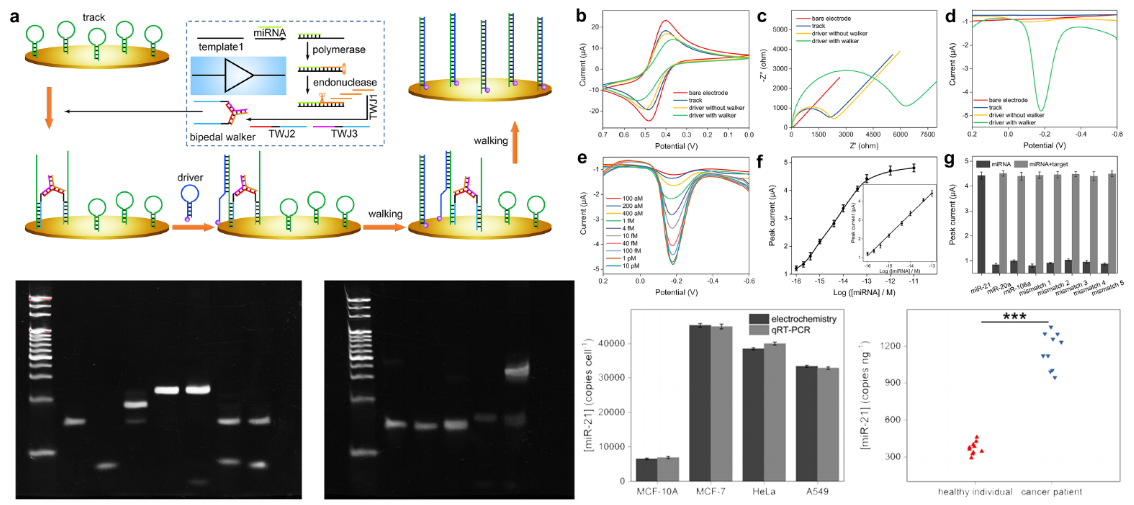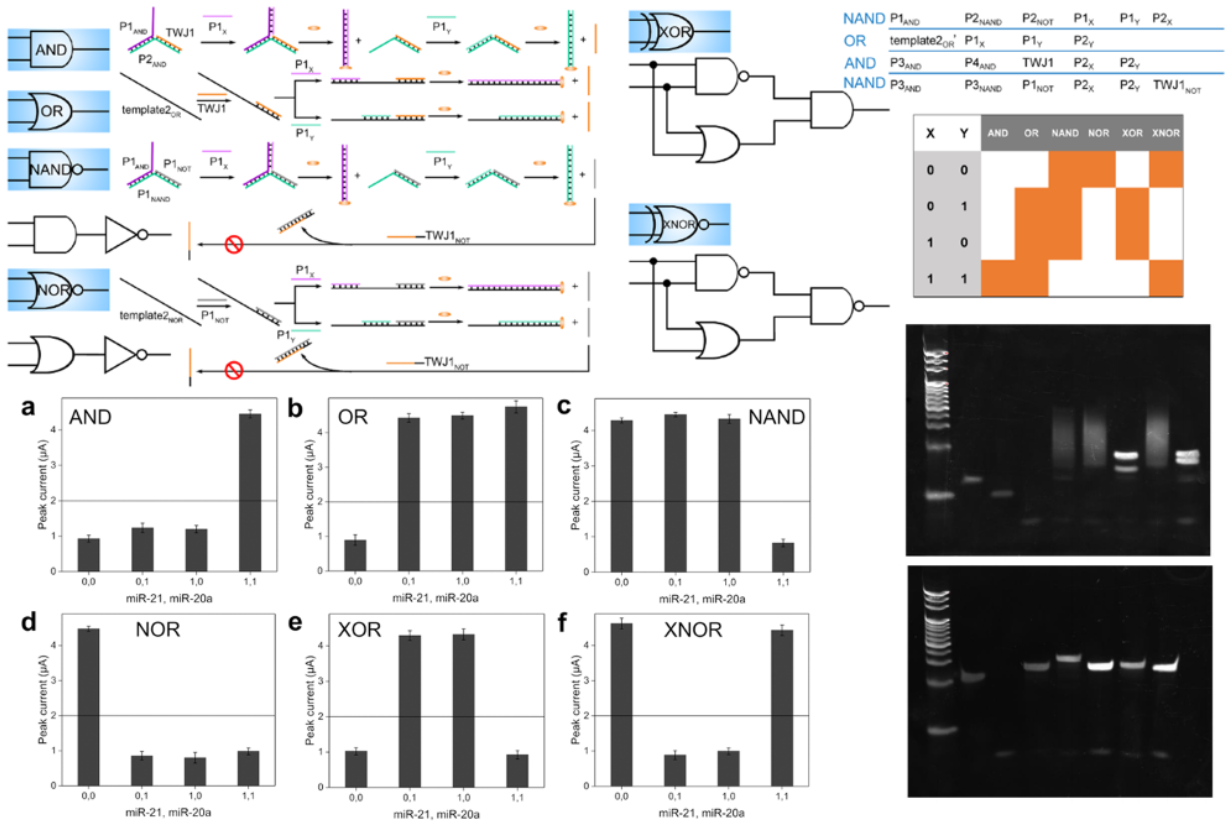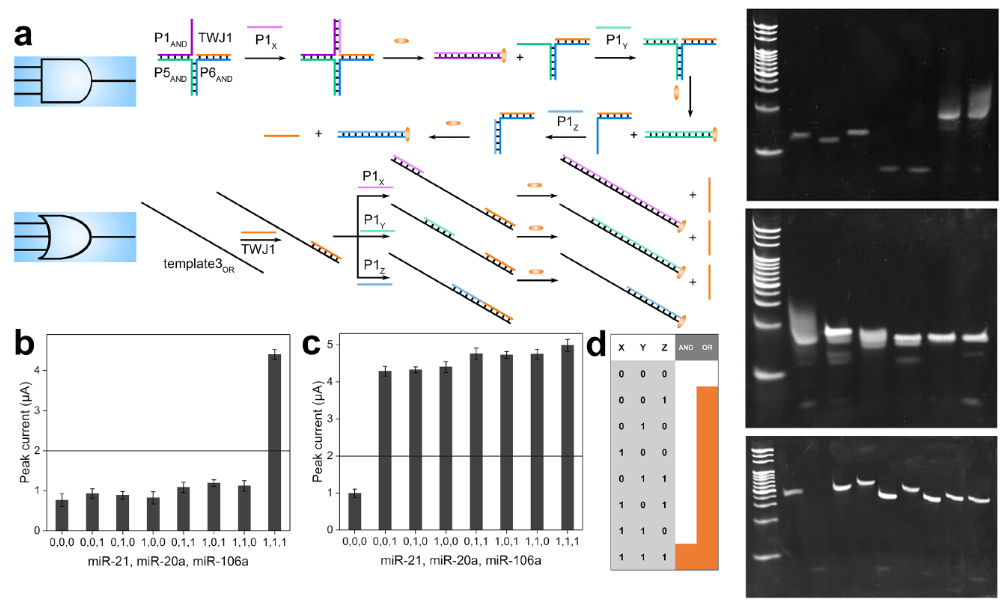Based on the complementary base pairing rules, a variety of complex secondary structures can be designed and assembled to develop DNA molecular devices with specific functions, including molecular switches, nanomachines, molecular frameworks, and logic circuits. These molecular devices play an important role in diverse research fields, such as life sciences, energy, information, and biological computing.
DNA logic gates take biomolecules (e.g. DNA) or other external information as input and characterization results induced by the changes of DNA structures as output. After Boolean operations, the mutual identification and correlation of various inputs can be determined. In addition, multiple cascaded logic gates, or logic circuits, can be constructed by taking the output of the former logic gate as the input of the latter one. With the various combination and different output modes, logic circuits enjoy broad biomedical application prospects.
Recently, MIAO Peng’s group from the Suzhou Institute of Biomedical Engineering and Technology (SIBET) has developed a novel bipedal DNA walking nanomachine and constructed a series of DNA logic circuits based on cascade strand displacement amplification. The tools can be used to explore relationships between biological molecules in complex samples.
First, track DNA probes with the stem-loop structure were modified on the electrode interface. In the upstream homogeneous system, target-triggered strand displacement amplification was introduced to generate a large number of single-stranded sequences. The DNA three-way junction structure was then assembled as a bipedal walker. In the presence of the stem-loop structured driver strand, the bipedal walker moved around the electrode interface to enrich electrochemical signal molecules (Figure 1). Furthermore, by employing incomplete three-way junction and double-stranded structures, AND and OR gates were constructed by cascading strand displacement amplification. Next, NAND, NOR, XOR, and XNOR gates were also developed. The two-input logic circuits exhibited excellent performance in logic operations (Figure 2). Then, the three-input AND and OR gates were fabricated using the designed four-way junction and double-stranded structures (Figure 3). The logic circuits developed in this study can not only be applied in ultra-sensitive biomedical sensing, but also provide new ideas for researches in biomolecule information control, communication, and biological computing.

Figure 1. Bipedal DNA walking based electrochemical detection of miRNA.(Image by SIBET)

Figure 2. Two-input logic gate construction.(Image by SIBET)

Figure 3. Three-input logic gate construction.(Image by SIBET)
Contact
XIAO Xintong
Suzhou Institute of Biomedical Engineering and Technology, Chinese Academy of Sciences (http://www.sibet.cas.cn/)
Phone: 86-512-69588013
E-mail: xiaoxt@sibet.ac.cn